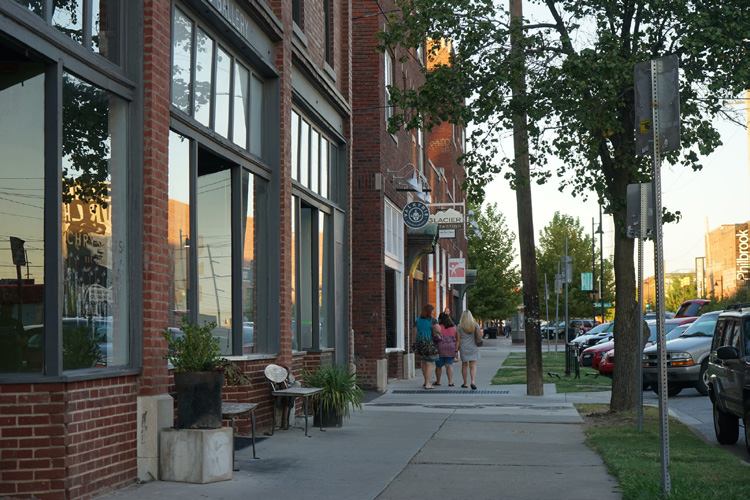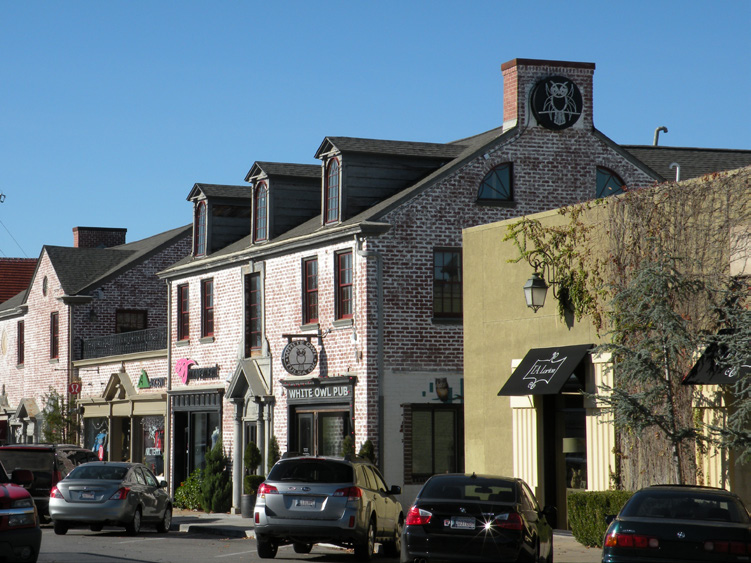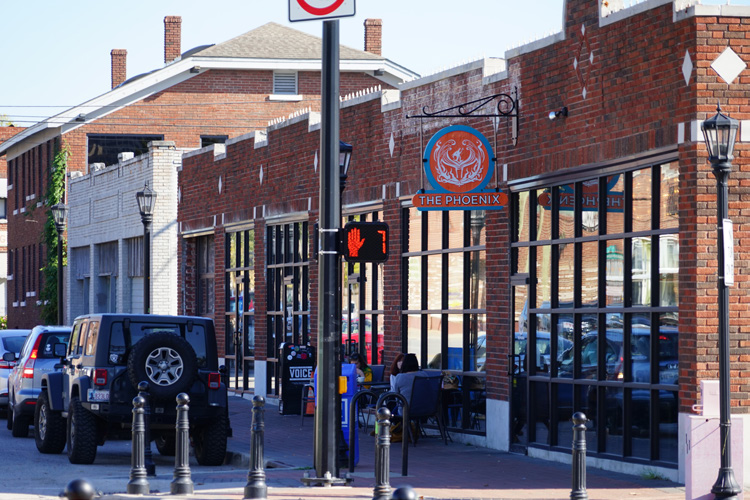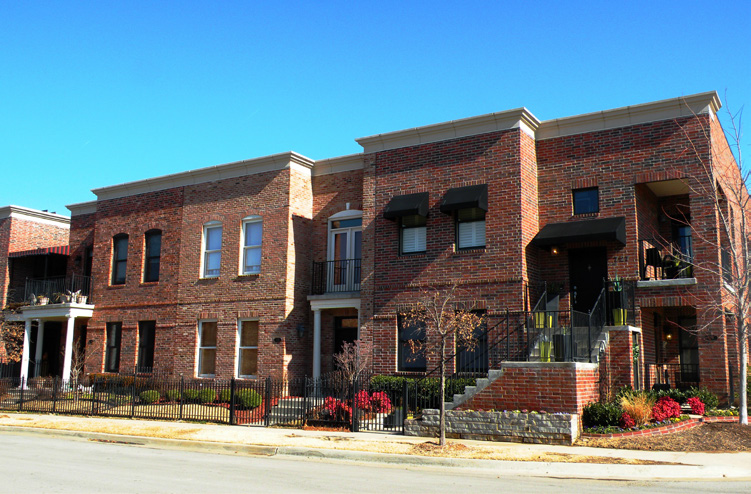City of Tulsa Mixed-Use Rezoning Incentive Program
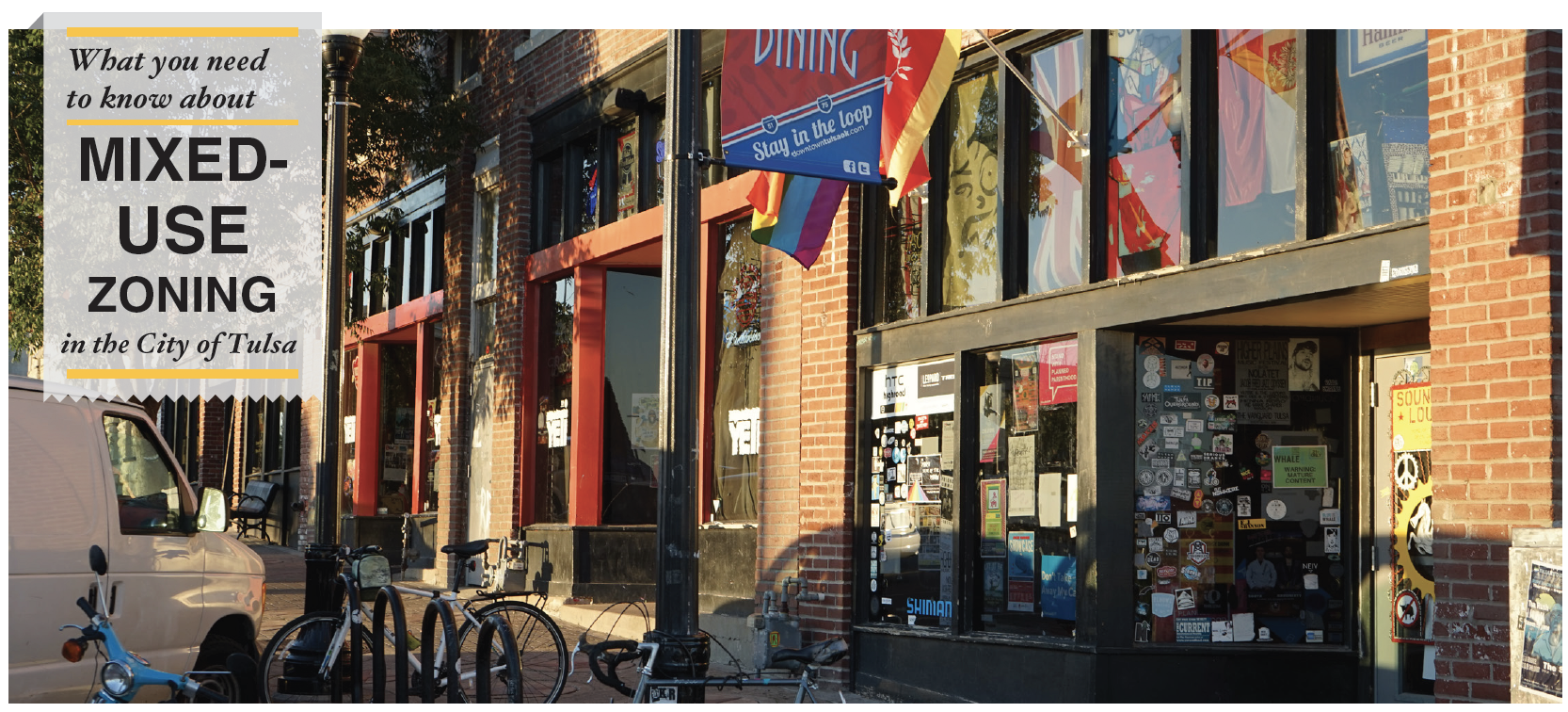
What is Mixed-Use Zoning?
As a part of the 2015 City of Tulsa Zoning Code update, new zoning districts were established to promote the mixture of land uses. Mixed-use zoning (MX) allows a mixture of residential, office, and retail uses within the same building or property, which can help make it easier to walk, bike, or drive to things you need near your home, like grocery stores, pharmacies, restaurants, and stores. This is the way cities were traditionally built for hundreds of years.
There are different types of mixed use districts in the zoning code, and though each have their own requirements, they generally place buildings closer to the street, are more accessible, encourage on-street parking and shared parking lots behind or beside buildings, and allow multiple uses in the same building. For instance, a two-story building may contain a restaurant or shop on the first floor, and offices or apartments above.
Applying mixed-use zoning to your property can help protect the future of your neighborhood by ensuring predictable and accessible developments that can make the neighborhood more desirable.
How is Mixed-Use Zoning Different?
The most obvious difference is the flexibility in uses that may be permitted on the property, like residences above shops and restaurants.
Another big difference is the use of building design standards. There are four types of mixed-use districts, each with its own set of design standards that govern things like the size and placement of buildings and parking lots, and making sure the ground floor has enough windows and entrances facing the sidewalk. These standards help ensure that future developments fit the scale of the neighborhood, encourage walkability, and accommodate multiple modes of transportation.
The zoning districts most common in Tulsa separate uses like residential neighborhoods from restaurants, shopping, doctor’s offices, and job centers, making trips between them longer, and most often by car. Mixed-use districts provide Tulsans another choice that makes it easier to get to where you need to go.
Why is This Important? What's in it for Me?
Mixed-use zoning can bring both social and economic benefits by allowing residential, recreational, and commercial spaces in close proximity to one another. Greater flexibility of uses and density are more profitable to property owners, while making it easier for neighborhood residents to reach their destinations without driving across town.
The way other zoning districts have traditionally restricted properties to a single type of use (such as commercial, office, industrial, or residential) significantly limits the value of the property, reducing the return on investment to the property owner, the business owner, and the City. Neighborhoods and districts prosper when they are designed to reduce the distance between housing, workplaces, retail, schools, medical care, and other destinations.
This reduction in distance creates greater connectivity and an overall sense of place within a neighborhood, which over time increases value. Mixed-use neighborhoods also provide more ways for everyone to get around, from allowing kids to walk to school safely, to giving older adults the freedom to get to everything they need without having to drive.
What are the Different Types of Mixed-Use Zoning?
The code offers four separate mixed-use character designations, which can be applied based on the context of the site being developed and the property owner’s desired outcomes.
1. Pedestrian (MX-P) - The Pedestrian character designation is generally intended to be applied to locations where a high level of pedestrian orientation is present or desired. Pedestrian-designated property will incur a build-to-zone rather than a building setback, bringing the building closer to the sidewalk. This designation also ensures adequate transparency (windows) and ground-floor heights that complement active street life and pedestrian areas.
2. Urban (MX-U) - Similar to the Pedestrian designation, the Urban character designation is generally intended to applied to areas with high levels of walkability, but where a greater variety of building types are present or desired, such as high-density residential or townhomes.
3. Variable (MX-V) - The Variable character designation is generally intended to be applied in auto-oriented areas where transitions to greater levels of walkability are underway or desired. The MX-V designation allows greater flexibility in the placement of buildings and parking areas. For example, buildings can be set back further from the street, which gives more space for landscaping and streetscape elements, or limited amounts of parking.
4. Flexible (MX-F) - The Flexible character designation is generally intended to allow the highest levels of flexibility in terms of building types and development patterns while continuing to ensure interaction with street-facing elements.
